Day 2 of a 4-day Autumn Tour. It was a bit cloudier than yesterday, and still rather windy, but it stayed dry all day. We spent the day in north-west Norfolk.
Our destination for the morning was Titchwell. As there were few cars there already when we arrived, as had a quick look round the overflow car park first. A small flock of Redwings flew overhead and dropped into the hedge behind us, and a couple of small groups of Chaffinches flew over calling too. There had clearly been some birds arriving from the Continent overnight.
A small bird flew across and up into the top of one of the big sallows. We couldn’t see it in the leaves, but then it flew up into the sky above flycatching. The elusive Yellow-browed Warbler! Unfortunately it dropped back down into the tree out of view and despite watching for a minute or two there was no further sign. There were a few tits in the hedge the other side, we could see some Long-tailed Tits flitting around which moved quickly back towards the main car park, and it had possibly gone round to follow those.
As we looked over the gate and out to the paddocks beyond, three Fieldfares flew off from the trees at the back and away over the village. There were a few Pied Wagtails and Meadow Pipits in the grass but nothing else of note. A Kestrel landed on dung heap. Several more Chaffinches flew over.
There was no sign of the tit flock in the main car park, so we continued on round to the Visitor Cente. The regular moth morning was underway and several moths had already been potted up from the first trap – seasonal specialities like Merveille du Jour and Green-brindled Crescent, and a larger Red Underwing. We had a quick look while we were passing and checked the bird list in the Centre.
Out onto the main path, we came across another tit flock at the Meadow Trail junction, but it moved through too quickly to see if there was anything with it. Out of the trees, we could see a Marsh Harrier out towards Thornham, along with several Little Egrets, Curlews and Redshanks on the saltmarsh. Two Common Snipe flew up and several Reed Buntings flew across over the path and dropped into the reedbed, where a couple of Cetti’s Warblers were shouting intermittently. A single Little Grebe was out on the main reedbed pool.
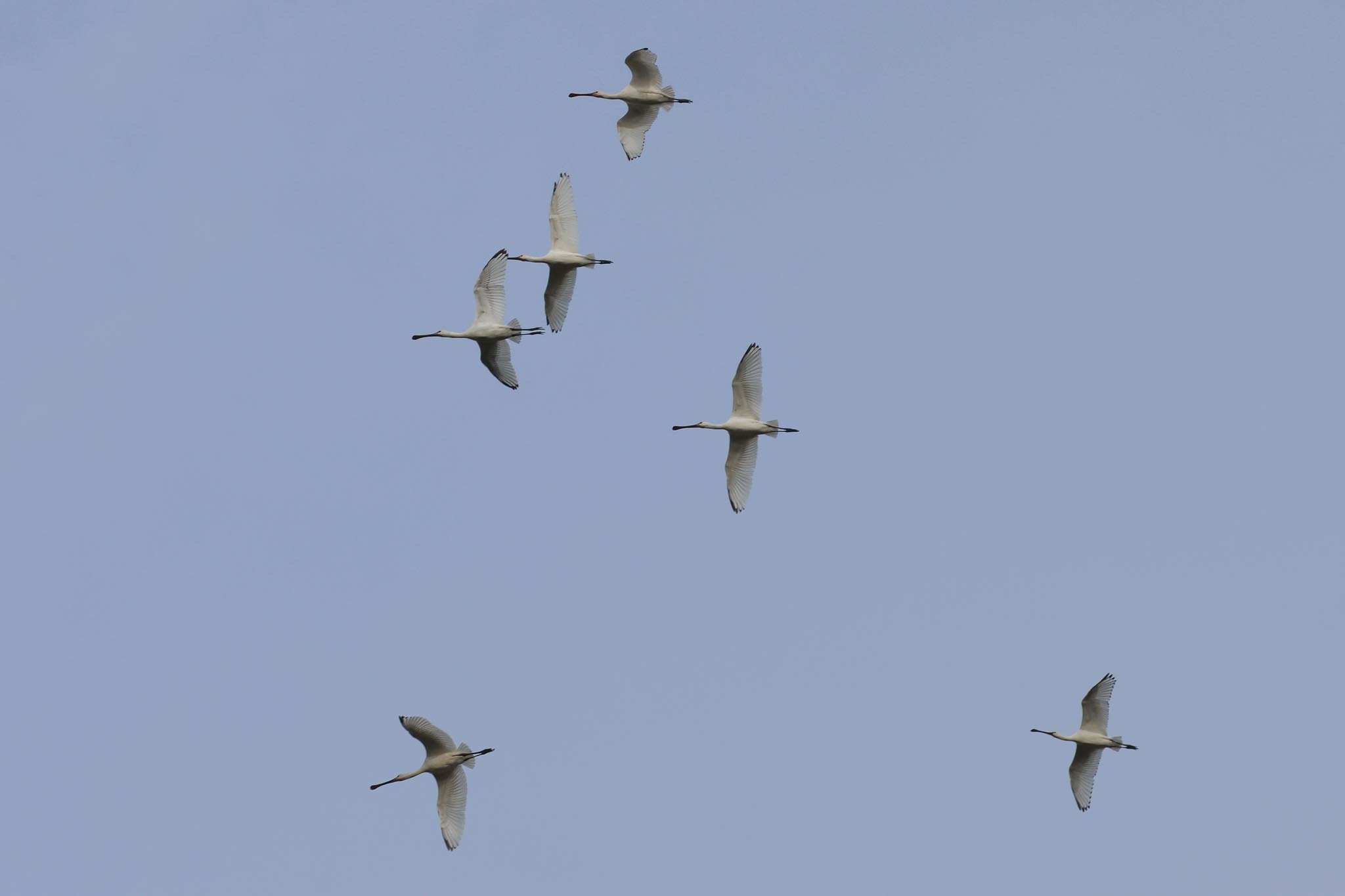
As we got up to the Freshmarsh, we looked across to see six Spoonbills flying towards us. They flew up over the path and headed off west, circling out over Thornham harbour, where the tide was still high and there was nowhere to land. Most of the Spoonbills which were here in the summer have already left us for the winter, so it was nice to catch up with some still here. A few flocks of Starlings flew over heading west, presumably more fresh arrivals from Scandinavia.
The water level on the Freshmarsh remains high – good for wildfowl, but not so attractive for waders. Lots of Brent Geese had dropped in to bathe on the first compartment, where a selection of commoner ducks were scattered around the edges and islands. A few Avocets were trying to feed out in the middle, up to their bellies in the water. There was nothing at all on the next compartment today, so we continued on round to Parrinder Hide.
We were hoping to find the Little Stint on the back compartment of the Freshmarsh from Parrinder Hide, but just as we arrived, it walked out of view behind one of the islands. There were more Avocets and a few Black-tailed Godwits roosting on the islands here, but no other waders.
A large flock of Greylags flew in and landed the other side of the bund from us. We scanned through and found the resident White-fronted Goose in with them. The geese all swam into the corner, out of sight behind the bund, but then walked across to the east compartment and swam out to one of the islands. We had a good view of the White-fronted Goose through the scope now, the white blaze round the base of its bill and its black belly patch, before it walked back into the Greylags and went to sleep out of view.
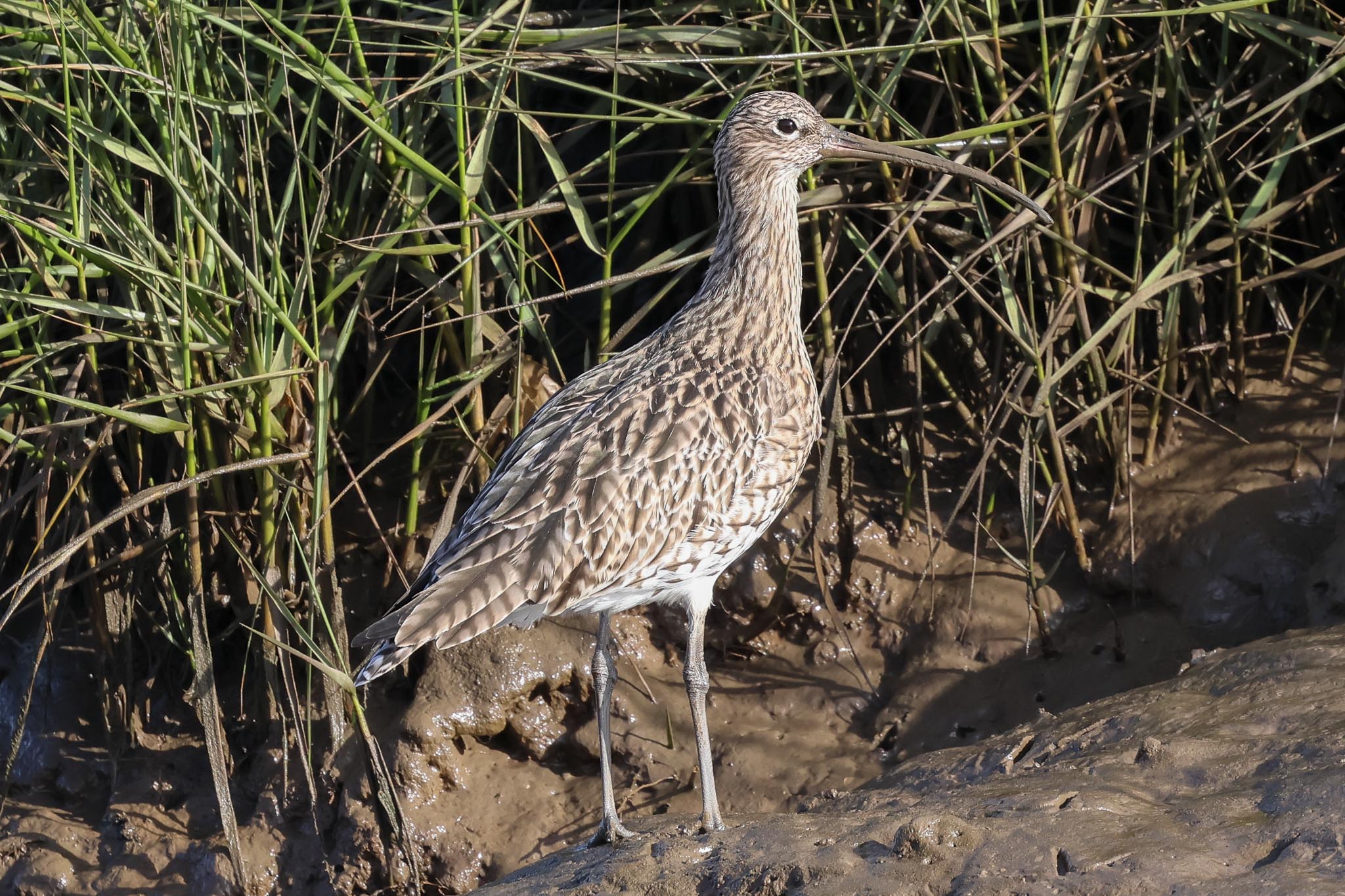
There was still no sign of the Little Stint reappearing, so we eventually gave up and headed out towards the beach. There were two Curlews feeding just below the path on the edge of Volunteer Marsh, a great view as we passed. Up at the far end, the tide had just gone out and there were lots more waders feeding in the muddy channel – lots of Black-tailed Godwits, Redshanks, more Curlew, a few Dunlin, several Grey Plover. We had thought we might find the Spotted Redshank here, but there was no sign of it.
Then we noticed a Red-throated Diver in the water in the bottom of the channel at the far end. A very unusual place to find one, they are normally out on the sea! It swam towards us, diving repeatedly, but when it got to the slightly shallower water, it turned and headed quickly back away from us.
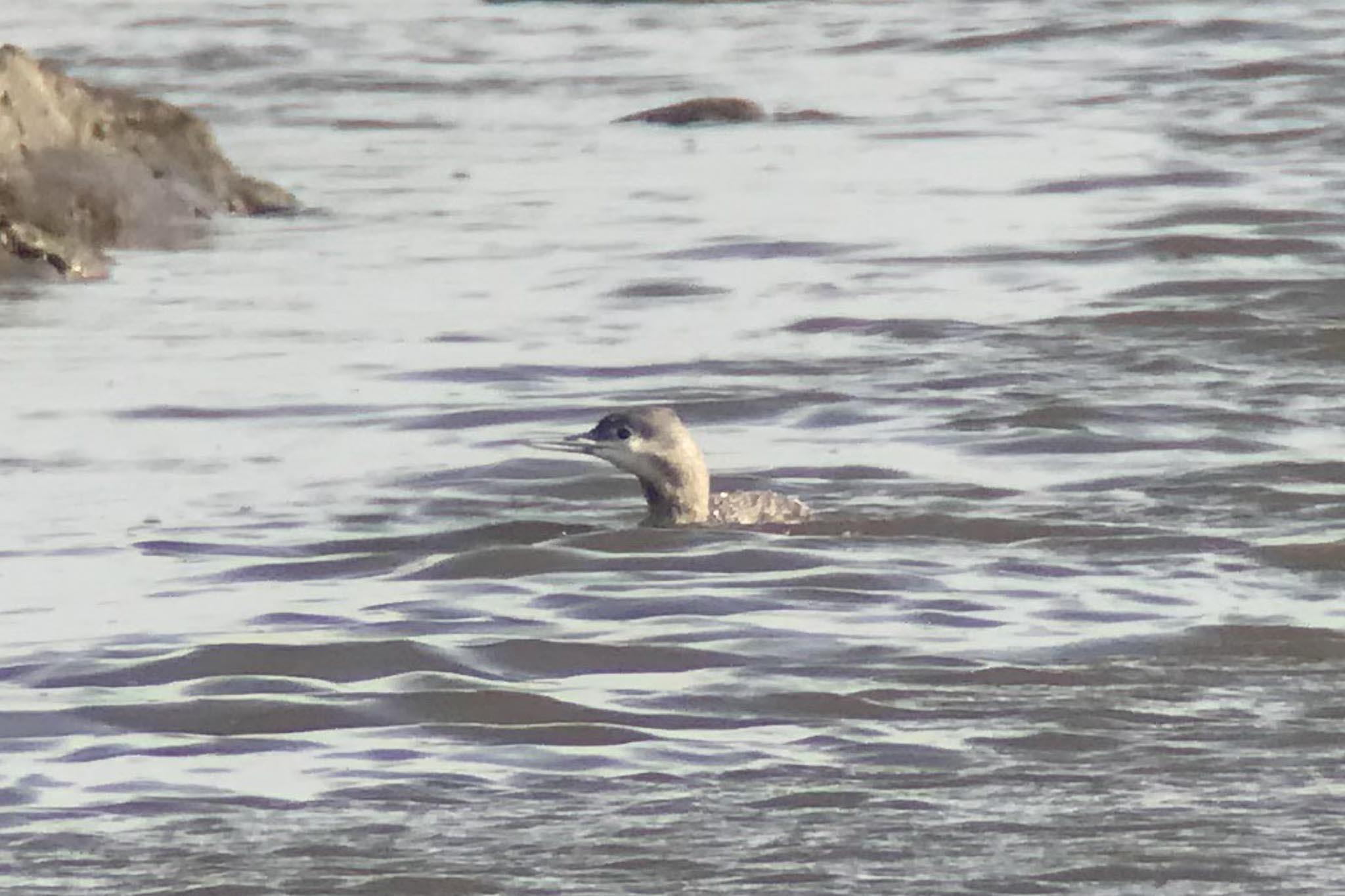
On to the Tidal Pools, there were a couple of very close Black-tailed Godwits right by the path. One pale wader was asleep further back and when it woke up and flashed its needle-fine bill our suspicions were confirmed – it was the Spotted Redshank. We were just watching it through the scope when it flew up and over the bank. We walked back and found it again, now in the muddy channel on the Volunteer Marsh where we had just been looking. A Red Kite had been hanging in the wind over the saltmarsh behind us, and now drifted over. The Spotted Redshank flew off first, and then all the waders flushed too.
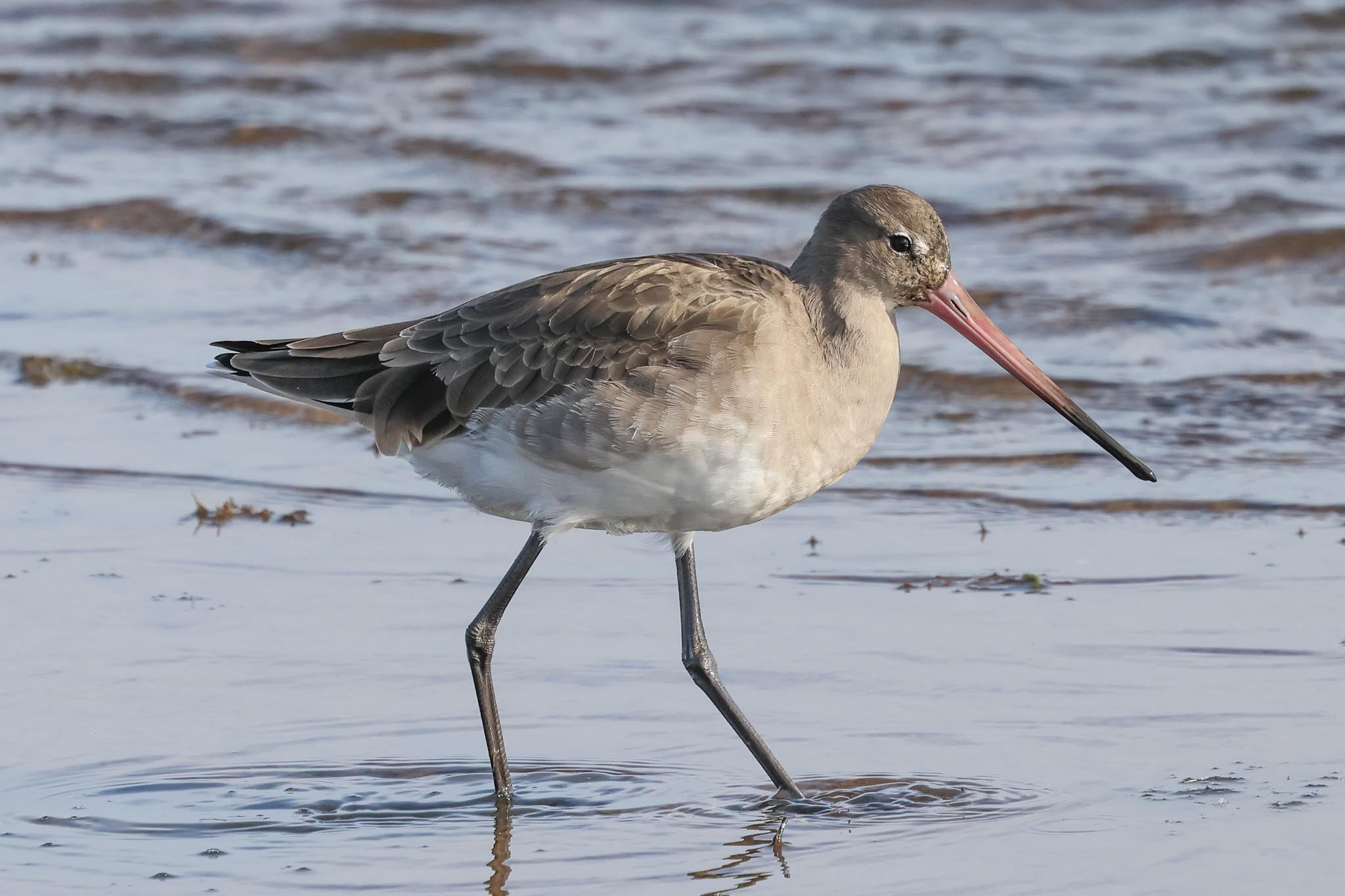
We continued on out now. We found a single Knot and a couple of Turnstone on the Tidal Pool now. Out on the beach, the mussel beds were still covered but there were lots of Oystercatchers and several Bar-tailed Godwits out on the shoreline. There were a few Sanderling higher up the beach to our left. Three were standing on a wet patch of sand, unusually stationary for here, so we got them in the scope. Several others ran up to the high tide line and then came right past us in front of us – great close views. A Ringed Plover flew in and joined them.
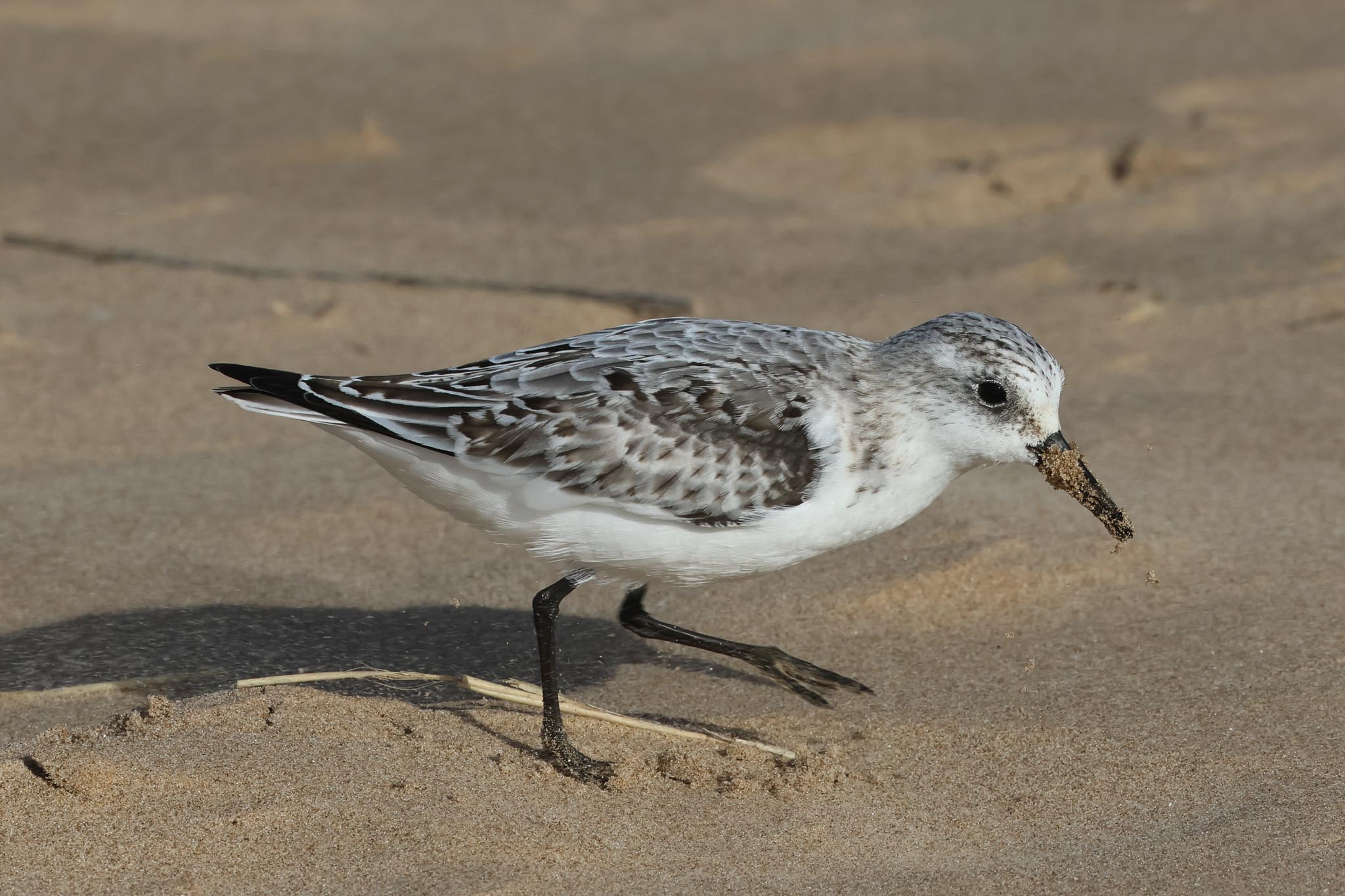
Looking out to sea, there were a few Great Crested Grebes, Red-throated Divers and Razorbills out on the water. We got a small raft of Common Scoter in the scope, mainly pale-cheeked brown females/immatures, but one jet black drake was in with them. Once again, there was a trickle of smaller birds arriving over the sea from the Continent, mainly small flocks of Starlings, but at one point we picked up four Bramblings flying in over the beach.
Two Manx Shearwaters flew past close in, just beyond the breakers. Unusual to see them so close inshore when there isn’t a strong onshore wind, as we watched, they started to tack back out to sea. A winter adult Mediterranean Gull was feeding along the shoreline, and we had a good view in the scope.
It was cool out on the beach, so we started to walk back. The other waders were back in the channel on the Volunteer Marsh but there was no sign of the Spotted Redshank with them now. Two Turnstones were feeding just below the path, turning stones and shells over in the bottom of the muddy channel.
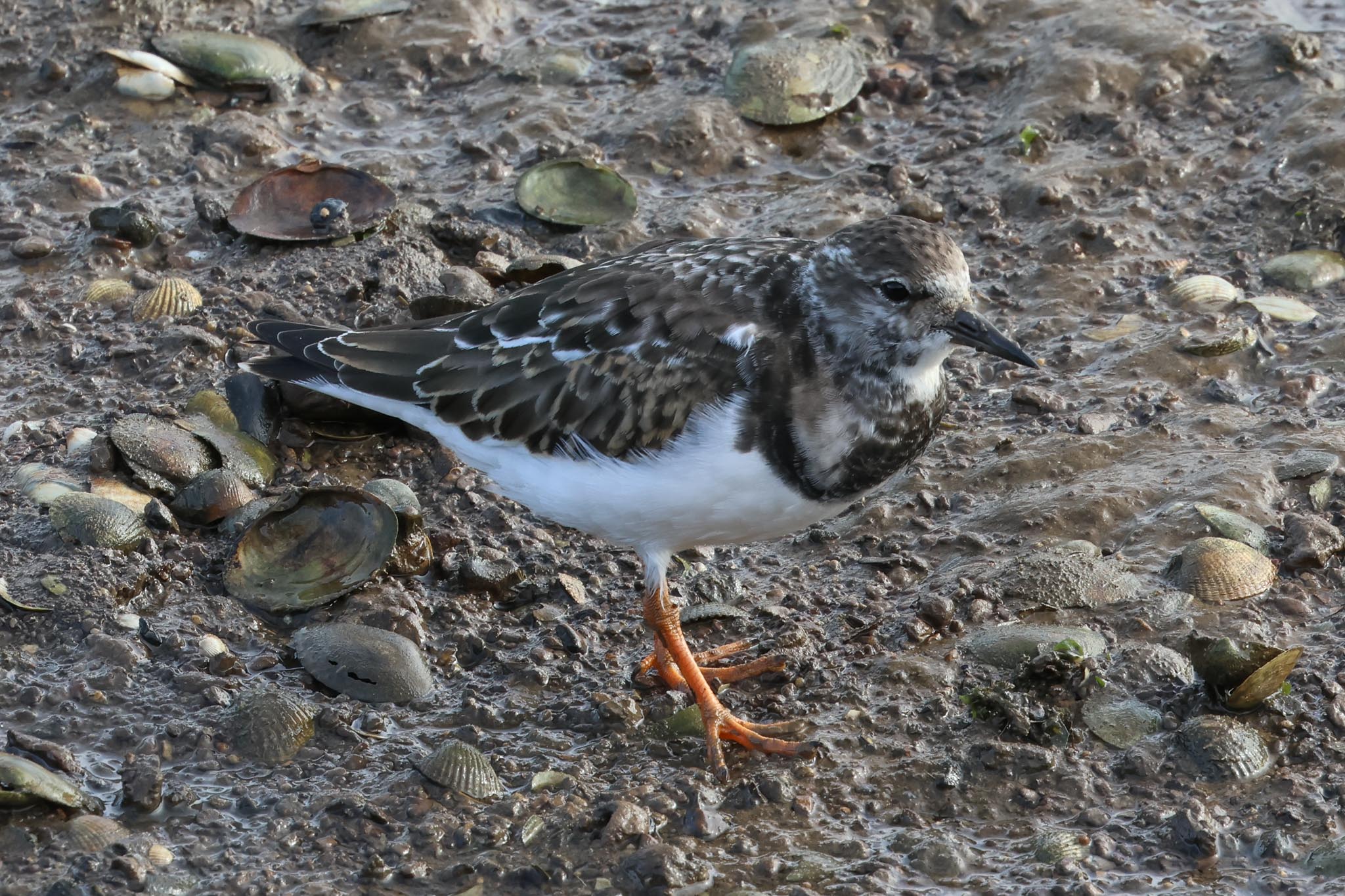
We stopped at the Freshmarsh again for a quick scan from the path with the scope, and picked up the Little Stint now, bathing on the edge of one of the new islands. Once again, it wasn’t going to play ball through, and flew before everyone could get a look at it, landing back out of view from here.
As we made our way back for lunch, a Willow Emerald damselfly was perched on the brambles by the path. We collected our bags from the minibus and sat in the picnic area in the sunshine to eat. After lunch, when we went back to the minibus to drop off our bags we were told the Yellow-browed Warbler had been in the sallows here again apparently, but there was no sign now.
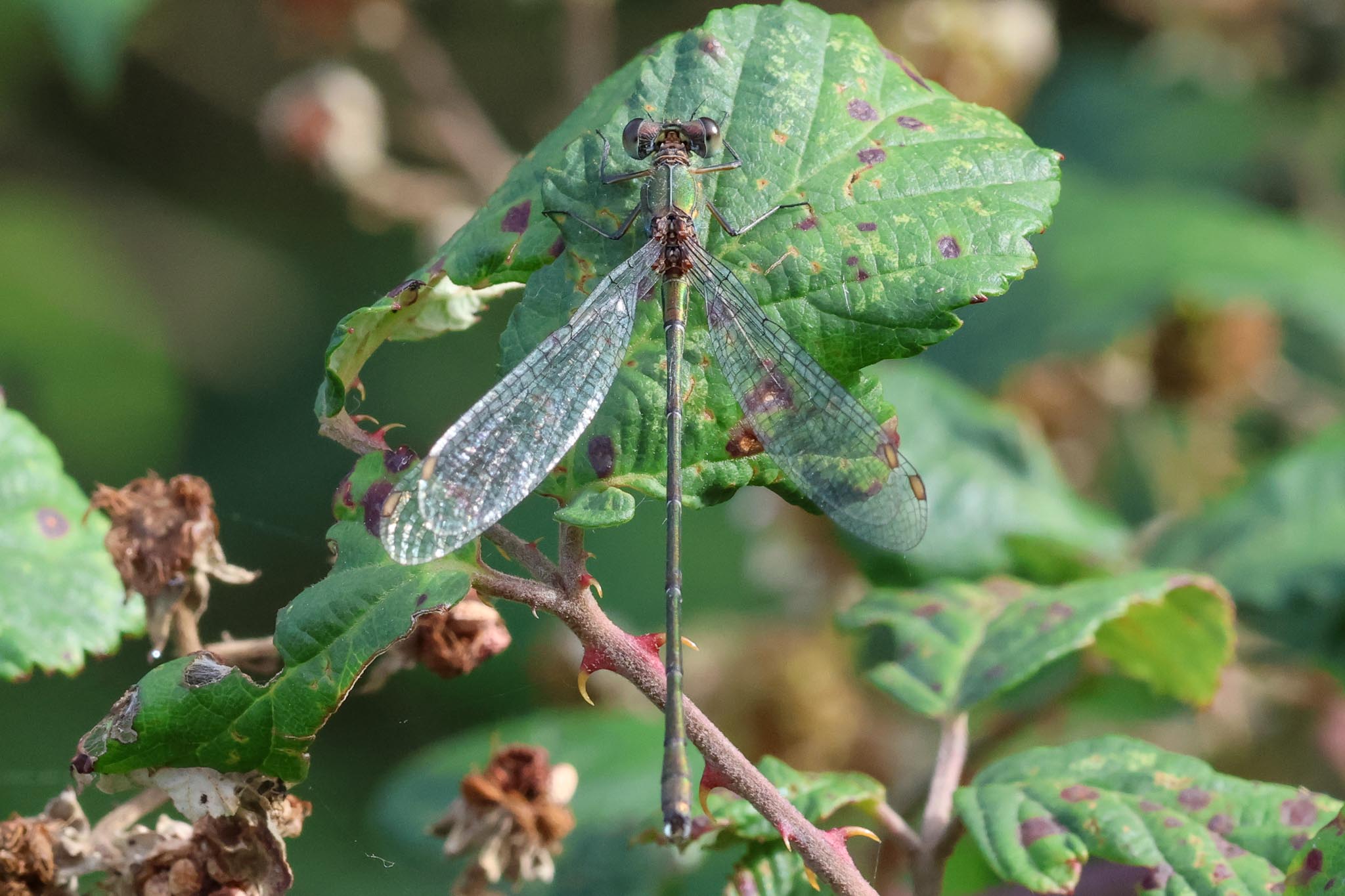
We decided to have a look along Fen Trail, so we made our way back round past the Visitor Centre but the sallows were quiet, and it was quite windy out on the Tank Road, round at the back of the car park. We had a quick stop at Patsy’s Reedbed – there were just a few Coot and a single Shelduck on here today – then continued on down East Trail. There were several Jackdaws in the paddocks now, one with a noticeable pale half-collar, possibly with some Nordic genes. A pipit flew over with a shrill call, not quite as sharpas a Rock Pipit and when we looked up we could see it was cleaner white below, a Water Pipit.
Out to the far end of the Autumn Trail, a Kingfisher flashed over path, and disappeared down into the reedbed. We could hear Bearded Tits calling, and three flew in over the bank ahead of us and dropped down into the reeds, followed by another two. The wind was catching the reeds and blowing the heads back and forth, so there was no sign of them perching up today.
We scanned the back of the Freshmarsh from the end of Autumn Trail and finally found the Little Stint in view, feeding along the edge of one of the islands. They are very small, as their name suggests, and it was still hard to see at times creeping around on the mud, but finally we all got a look at it before it flew round to the back of one of the other islands and out of view again.
The Greylags were starting to wake up now and fly off from the Freshmarsh in small groups, over the bank towards Brancaster. The White-fronted Goose woke up and swam out with some Greylags, right towards us. It looked like it might be getting ready to follow the others, but then all the Greylags which had flown out flew back in. The light was better now from this side and we got an even better view of the White-fronted Goose through the scope than this morning. We picked up a pair of Pintail out on the Freshmarsh from here too.
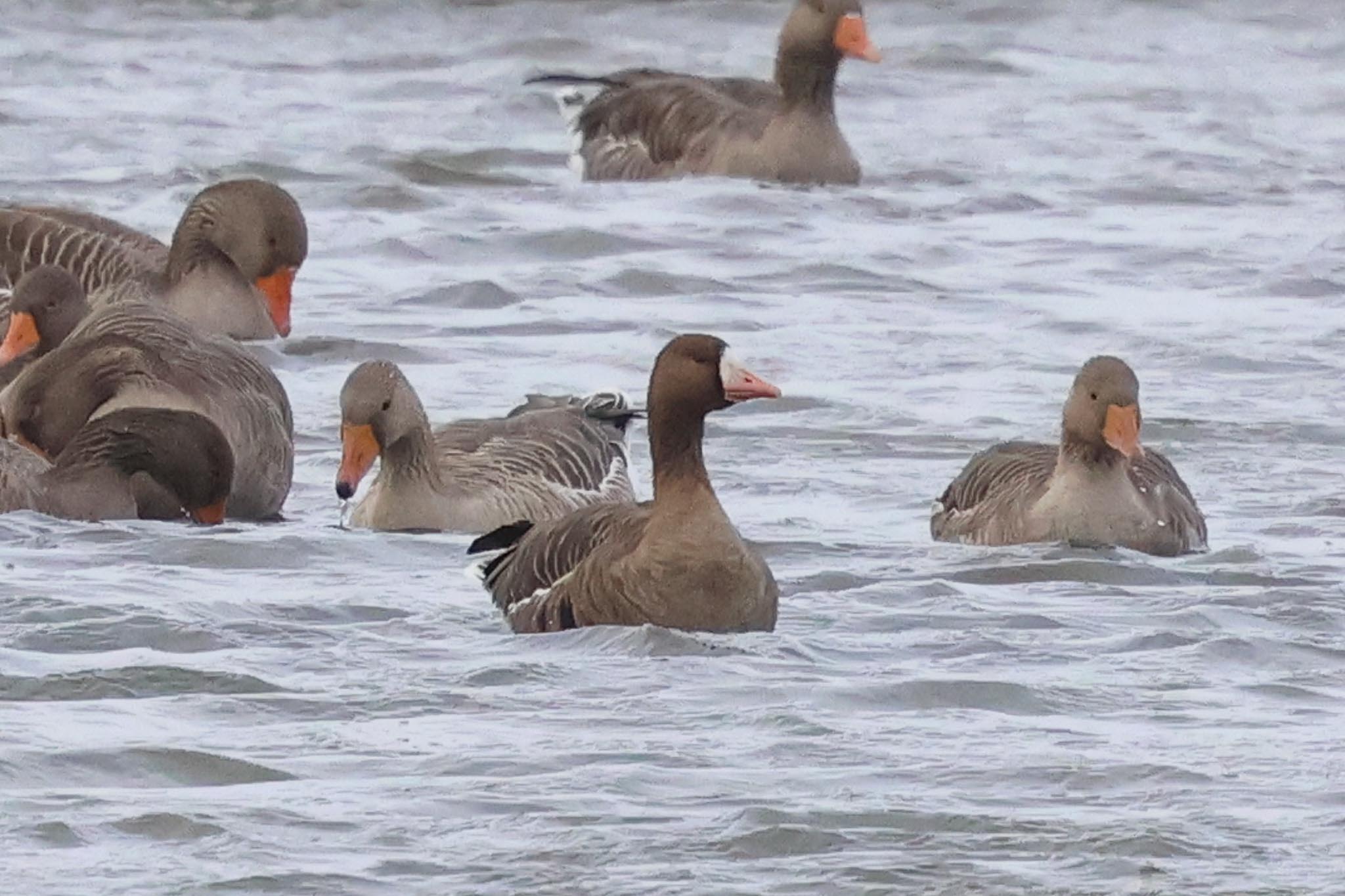
As we walked back round, there were a few thrushes in the bushes by Willow Wood, Redwings, Song Thrushes and Blackbirds. Back along Fen Trail, we could hear a couple of Chaffinches calling in the trees by the path, and then a Brambling started calling nearby too but flew before we could get on it. There were Long-tailed Tits calling too, but when we stopped to look, the flock passed through too quickly to see if there was anything with it.
Back round at the car park, we were just getting in to the minibus when the Yellow-browed Warbler started calling in the sallows nearby. We walked over for a look and this time it called repeatedly for a minute or so. Unfortunately it remained deep in the bushes and we couldn’t see it, just a Goldcrest and some of the tits. Then everything disappeared back deeper into the trees again. That was as good as it was going to get today!
We had enough time for a quick stop at Brancaster Staithe. Down at the harbour, the tide was out and there were several Curlews and Black-tailed Godwits scattered around. A Grey Plover still in the remnants of breeding plumage, with a dusky face, was on the mud nearby. A single Bar-tailed Godwit was feeding on the sandbar opposite, a Ringed Plover flew past and several Oystercatchers and Turnstones were picking around the piles of discarded mussels. A Herring Gull was trying to crack into one of the mussels by repeatedly dropping it from a height onto the stones.
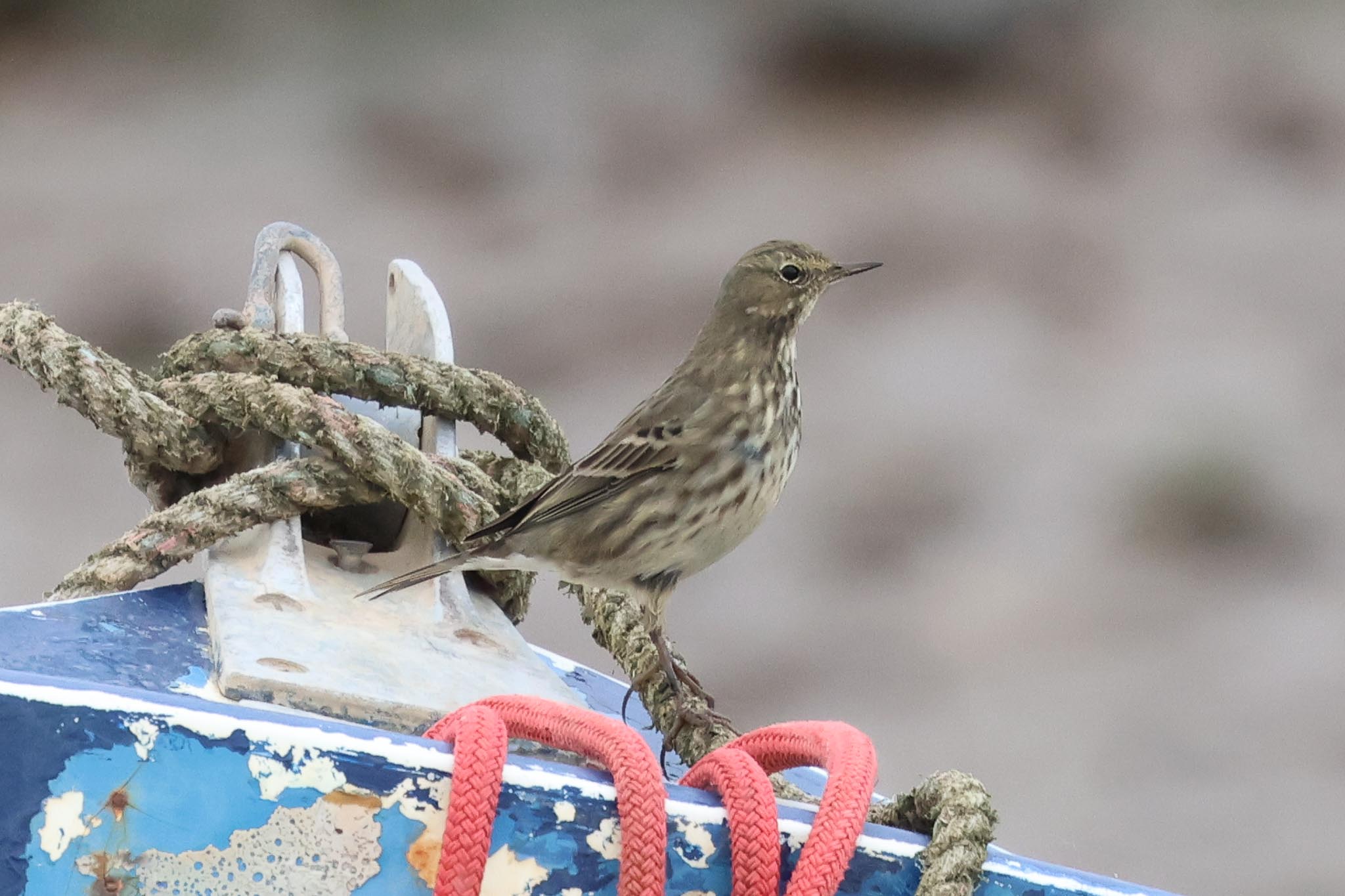
A Rock Pipit called and flew in, landing on the gunwale of a nearby boat. It dropped down into the boat, possibly there was some rainwater in the bottom, before flying back up again. These are Scandinavian Rock Pipits that we get here in the winter and which like to feed out on the saltmarshes. A large flock of Pink-footed Geese flew in from inland and overhead calling, heading off towards Scolt Head to roost. Time for us to head back too.
















